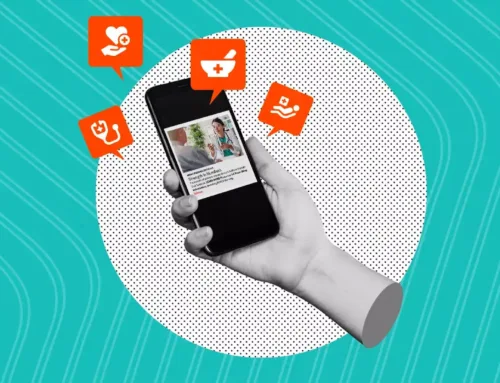If you mastered only a dozen key email marketing strategies, you’d be hard pressed to find a better 12 than those we’ve outlined below. That’s because as a marketer, you walk a fine line between email serving your organization’s needs and making a positive impression on your target audiences so your emails stand out in their inboxes.
On the one hand, email marketing allows you to connect with your audiences and stay top-of-mind with customers and prospects. It can help you generate and nurture leads, encourage repeat customers, tell your brand’s stories, and much more. But at the same time, today’s consumers are inundated with email marketing campaigns. To stand out from the crowd and maximize results, it’s more important than ever to ensure your email marketing strategy is on point.
Below we’ve outlined 12 key email marketing strategies to help you get the most value from your efforts. We cover things like, how to employ double opens and frequency capping, the secret to a compelling CTA, and even how you can use email to amplify your SEO results. Let’s dive in!
1
Start with a Clean List
While building a clean list requires some effort upfront, it’ll be well worth your time. You’ll see the greatest ROI when you build and maintain a clean, engaged subscriber list that’s comprised of people who opted in to receive your emails.
One of the best ways to build an effective email list is to create a signup form on your website. One of the worst ways? Purchasing an email list. Sending emails to a list of people who haven’t opted in to receive your content will almost guarantee high unsubscribe rates and a trip straight to the spam folder. Which brings us to our next strategy…
2
Avoid the Spam Folder
Even if you have a legitimate list of subscribers who’ve opted in to receive your emails, you might still find yourself struggling to stay out of the spam folder. You already know you should not purchase email lists, but there are many other things you can do to improve your deliverability. Here are a few examples:
- Engage a reliable Email Service Provider (ESP) with a high sender reputation.
- Don’t use risky words that are likely to get flagged by spam filters (i.e. “prize”, “promo”, “buy”, “free”, etc.)
- Only link to legitimate sites and use credible image hosting services.
- Avoid misleading claims or deceptive subject lines.
- Don’t overuse exclamation points and words in “ALL CAPS.”
- Once you confirm a new subscriber, ask them to add your sender address to their address book.
3
Employ the Double Opens Strategy
No matter how great your content is, most people won’t open your email the first time. The reason could be anything from your subject line to timing or simply how busy the recipient’s day was.
The double opens strategy allows you to “reuse” the email content you worked so hard to create in an effort to improve open rates. It involves re-sending the same email to subscribers who didn’t open your first email, but with a different subject line. It may surprise you how a simple tweak to the subject line or timing of your email can boost performance.
4
Be Personal and Relevant
Don’t send emails just to send them. Instead, improve your open and clickthrough rates by developing relevant email campaigns tailored to your audiences and where they are in the buyer’s journey. Consider a mix of campaign styles to meet the needs of various audience segments and your overall objectives.
5
Write a Killer Subject Line
Since today’s email inboxes are flooded with hundreds of emails per day, a powerful, attention-grabbing subject line is more critical than ever. Aside from boosting open rates, a well-written subject line can also help you stay out of the spam folder. Here are a few ideas:
- Avoid anything spammy or overly-promotional (see #2 above).
- Keep it short and sweet.
- Use action-oriented words.
- Ask an open-ended question.
- Create a sense of urgency by including a deadline (i.e. “last chance” or “24 hours only”).
- Use personalization tokens like name or location.
- Include numbers.
6
Don’t Forget the Preview Text
Neglecting the preview text is a common mistake. The preview text is what typically displays alongside the subject line when your email is sitting in a recipient’s inbox. It provides a preview of your email’s content.
If you don’t customize the preview text, the email client will automatically pull from the body of your email. Not only is this a wasted opportunity to further engage your audience beyond the subject line, it can also be messy and/or confusing, depending on your content.
7
Promote Action with a Compelling CTA
A call to action (CTA) is a button or link that encourages readers to click and is a critical element of any marketing email. Here are a few tips to help you create a compelling CTA:
- Use a CTA button (rather than a link-based CTA). Buttons are eye-catching, clean and mobile-friendly.
- Use precise, action-oriented copy. Rather than generic language like “Learn More” or “Submit,” try to tie in your specific offer (i.e. “Claim Your Spot” or “Get 50% off”).
- Create urgency by including words like “now” or “today only.”
8
Design with Mobile in Mind
Today, 42% of all emails are opened on smartphones or tablets. To ensure your emails are optimized for mobile, consider everything from the subject line to the layout, font and button size, and overall message length. For example, single column layouts typically work best on mobile devices, and your subject lines and content should be as short and concise as possible.
9
Use Frequency Capping
If you email your subscribers too often, they’re more likely to mark your email as spam or unsubscribe from your email list. Frequency capping is a useful feature within most email marketing platforms that allows you to limit the number of emails your subscribers will receive during a designated time.
10
Test, Test and Test Again
Testing is one of the best ways to understand your audience’s behaviors and finetune your email marketing strategy. Consider A/B testing everything from your subject lines, preview texts, email copy and/or design and calls to action. You can also play around with audience segments and timing. Just remember to only test one element at a time so you truly understand what’s causing differences in performance.
11
Use Email to Amplify Your SEO Results
When it comes to boosting your SEO efforts, think of email as your secret weapon. Here’s why: The goal of an email campaign is to send relevant content to qualified audiences who want to receive it. You’re typically enticing them to click and visit a specific page on your site that’s relevant to their needs.
The result? An increased amount of quality traffic that can help reduce your bounce rate and increase engagement and time on site – all of which search engines consider as positives when determining your ranking.
12
Choose the Right Partner
Email marketing requires dedicated time and expertise. There’s a lot to consider, from audience segmentation to personalization, automation, testing, measuring and more. You’ll also need to invest in an email marketing platform to distribute your messages. That’s why engaging with a partner to — deliver email marketing services that support and integrate with your entire sales and marketing ecosystem — can be a great way to save time and maximize your ROI.
Set Your Brand Up for Success
If you’re looking to improve and enhance your email marketing strategies, we recommend starting with an email marketing audit. It’s a simple and effective way to evaluate everything from your opt-in process to your distribution platform, messaging, design and analytics. You’ll be left with the tools required to adjust your current program or build and execute a new email marketing program tailored to your unique situation and goals.






